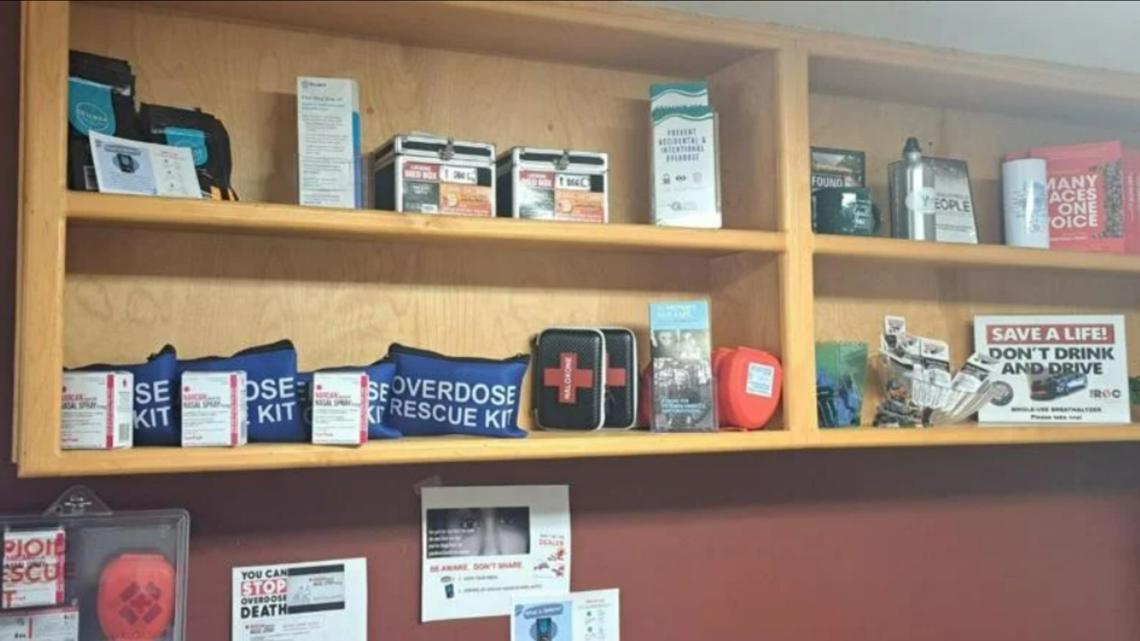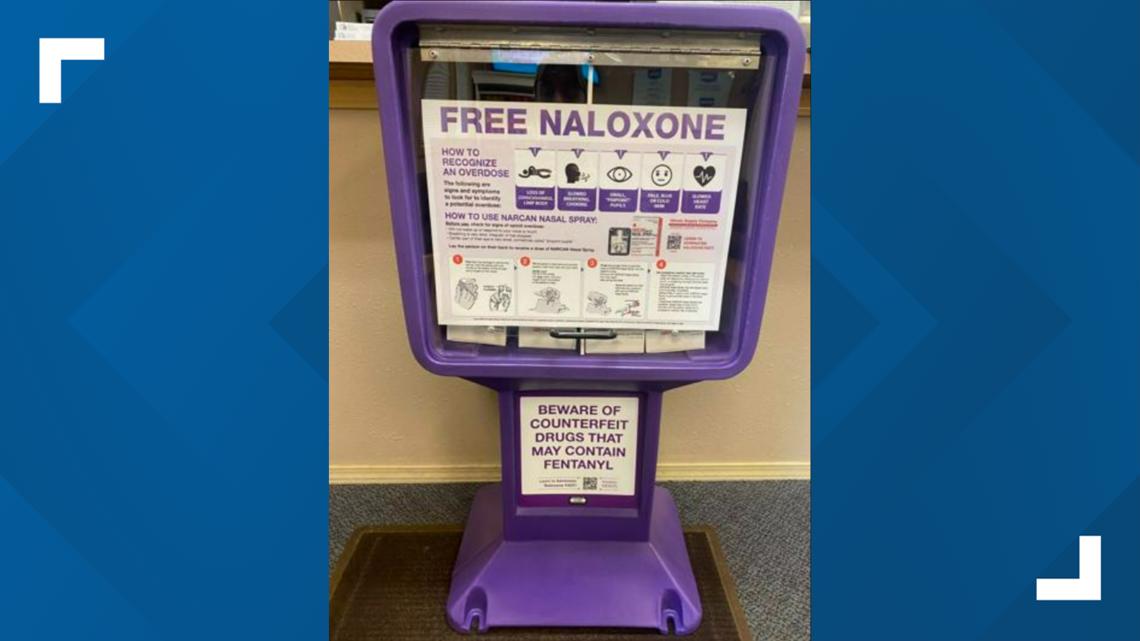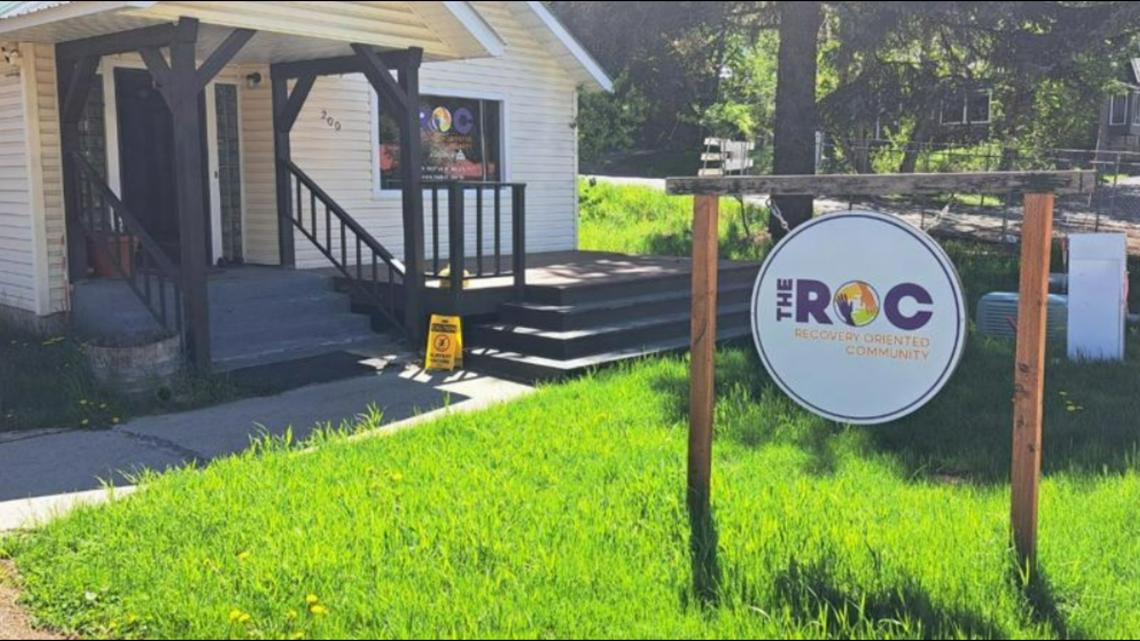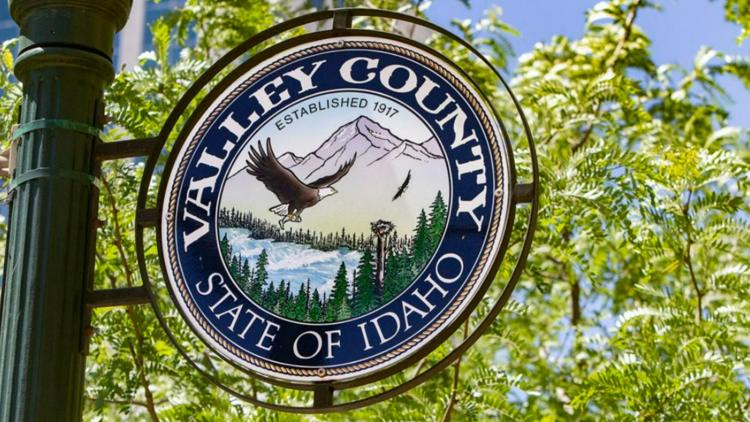VALLEY COUNTY, Idaho — This article originally appeared in the Idaho Press.
As the nation’s opioid crisis continues, even the small, picturesque mountain towns of Valley County aren’t immune to the impacts.
During the first three months of the year, there were four people who died there of overdoses related to opioids. In an area that spans more than 3,700 square miles with only about 12,400 people, it was an unusual spate of deaths.
“It was a shock to our community for it to happen recently,” said Monica Forbes, CEO of Recovery United, which operates the Valley County Recovery Community Center.
Opiates hadn’t been as prevalent in the community as in other more urban areas of the state, she said, but the issue highlights a growing need in the mostly rural Gem State about the lack of access to treatment and other services.
Two of the deaths involved fentanyl and two involved carfentanil — a rare and even more potent synthetic opioid. The families of the victims did not want their names publicly shared, Valley County Coroner Scott Carver said. The people who died ranged in age from 28 to 54, and three were local Valley County residents and one was from Ada County.
THE IMMEDIATE IMPACT
Because the spate of deaths happened in such a short time period, those who do provide services immediately responded to boost their efforts and awareness.
The deaths hit particularly close to home for the community at the Recovery Community Center, known as the ROC for recovery-oriented community.
The center provides peer support for those dealing with substance use disorder, and two of the deaths happened with people who had interacted with the ROC.
“There’s been a lot of grief,” Forbes said.


She said some of those who were dealing with their own substance use disorder experienced relapses as a result of the grief, but others rallied in support around them to get them back on track with their recovery.
Counselors from Ignite Idaho and from Central Idaho Counseling made themselves available to those dealing with the loss.
She also said many people went into action to try and prevent more deaths, including distributing more of the overdose-reversal-drug naloxone, known by the brand name Narcan.
Other service providers in the area also responded quickly to the news.
“We talked about what other information do we need to distribute, where else can we get naloxone, what other trainings do we need,” said Shelley Hitt, the project coordinator for Central District Health’s Valley County Opioid Response Project.
Within a week or so of the discussion, a new box filled with Narcan was installed at the McCall Central District Health office. Known as a Barney Box for its purple color, it holds free nasal spray boxes that can be obtained for free without having to ask for assistance. She said the district is working to install another box at the Ignite Idaho Family Resource Center.
Having the nasal spray throughout the community is critical to prevent overdose deaths, Hitt said, especially in a large geographical area where it may take time for emergency services to arrive.
There was also an effort to boost awareness of already available resources, Hitt said, and plans in place for more education and training events.
VALLEY COUNTY RESOURCES
The Valley County Opioid Response Project uses federal grant funding to reduce opioid use and overdose deaths in rural communities.


Money also went into implementing youth prevention strategies through the Youth Advocacy Coalition. There’s also been efforts in the community to reduce stigma and train parents to talk to young people about substance use and the dangers, especially about fentanyl-laced pills.
Some of the grant money was used to start the recovery center, Hitt said
The ROC opened in 2019, and since then has about tripled the number of individuals served in a month, Forbes said. The center focuses on peer-based recovery, so its certified recovery coaches have also dealt with substance use disorder. This happens on-site, with those leaving jail, and at the emergency room.
Forbes, who still also serves as a recovery coach, is nearing her 20-year anniversary of sobriety from opiates. Her personal experience allows her to connect to and understand clients in a way that other providers might not.
“I’m going to have opioid disorder for the rest of my life,” Forbes said. “You get into moments, you have urges, and you have thoughts. ... What you learn is how to manage it and not to give into it, but that takes time.”
Medical services for opioid use disorder can also be found at Cascade Medical Clinic, St. Luke’s in McCall, Layette Lakes Family Medicine in McCall, and Central Idaho Counseling in McCall.
There is access to some medication assisted treatment, which is used to relieve withdrawal symptoms and prevent overdoses.
There are different medications that can be used that are administered differently depending on how the patient responds. Two of the options, Vivitrol and Suboxone, are available in the county.
The third common method, Methadone, can only be administered in approved clinical settings and must be done daily. There are no approved dosing centers in the area, Forbes said, and people must travel to the Treasure Valley for it.
“That is problematic,” Forbes said. “As we see the increased strength from heroin to fentanyl, a fentanyl user may not respond as well to the Suboxone … When you have an individual that is not responding as favorably as they would like to the Suboxone, they don’t have any other options.”
The only way to be able to consistently get the daily methadone treatment would be to move outside the county, she said, which some of her clients have done.


RURAL CHALLENGES AND LIMITATIONS
In addition to the challenges accessing medication, there are no options for inpatient services, she said. Her clients travel to Boise, Nampa, Caldwell and Ontario for that.
There are outpatient services available, as well as counseling services — but sometimes behavioral health counselors are booked out for long periods of time.
Telehealth is also an option, but good internet availability and reliability is also a limiting factor for some.
The area, especially McCall, is a popular tourist destination as well, which means the population balloons during peak seasons. Some of those vacationers or people who have second homes in the area end up utilizing the services provided.
EMS in the area is also stretched thin, which puts people at risk if they do experience an overdose. During an overdose, breathing usually slows significantly or all together stops, which makes a quick response critical to the person’s survival.
Carrying Narcan and providing other emergency care can be vital, according to commissioners for the recently formed Valley County EMS District.
“It is crucial not only to carry Narcan but to also possess knowledge and skills in CPR, the abdominal thrust, carrying and using fire extinguishers, stopping the bleed and knowing the recovery position,” the commissioners wrote in an emailed statement to the Idaho Press. “These skills are not limited to remote areas or peak tourism times; they are relevant for in town all the time. Although we do our best, EMS is underfunded in Valley County. Cascade has two (personnel) available 24/7/365. When they are on a call, you will have a delayed response. Being knowledgeable and skilled in various emergency response techniques can make a significant difference in saving the life of your loved one and a bridge to care when EMS is on their way.”
The average response time of the Cascade Rural Fire District was 15 minutes in 2022, according to a recent County Resource Assessment. The Donnelly Rural Fire District average response time was 10 minutes, but the transport time was 23 minutes.
In addition to geographical concerns, living in small towns can add hurdles to those dealing with addiction and are concerned with the stigma attached to it.
“It becomes something that’s really challenging, you could be jeopardizing your standing in the community, your job even, to come forward and ask for help with a substance use disorder,” Forbes said. “So I think a lot of people don’t, they just try and handle it on their own. Until maybe they have no choice.”
OPIOID AND FENTANYL CRISIS
There were 270 opioid-related deaths in Idaho in 2022, and nearly half of all overdose deaths in the state involved fentanyl. It’s been a central focus of the Idaho Legislature and Gov. Brad Little, who recently reinstated his fentanyl working group.
The state this year added a mandatory prison sentence for possession of certain levels of fentanyl or mixtures with fentanyl in a controversial effort to curb the flow of the drug into the state.
Fentanyl is 50 times more potent than heroin and is increasingly found laced in other substances. The Legislature this year legalized fentanyl testing strips, which had previously been considered illegal drug paraphernalia under Idaho law.
Carfentanil is a new concern; these deaths were the first time the substance had been recorded in Valley County, according to the coroner.


The synthetic opioid is about 10,000 times more potent than morphine and 100 times more potent than fentanyl, according to the Drug Enforcement Administration.
It hasn’t been found in any drugs seized in Idaho and tested by the DEA western lab in the last five years, according to a spokesperson for the agency. The Idaho State Police said it has had just two positive tests for the drug in the last year, both of which were in the Meridian lab.
Dealing with addiction and deaths is a story separate from the numbers.
Forbes herself has survived three overdoses.
“Even though I survived, it was still traumatic,” she said. “Having survived and to look back and see how people were desperate, they didn’t do anything to help me but they didn’t know what to do.”
She, like many during the opioid epidemic, had developed an addiction to prescription opioid medications.
She also has lost clients over the years to overdoses as well as family members.
Through grief there’s also anger or blame on yourself for not doing more to help. Some families take the “tough love” approach to their loved ones substance use disorder and kick them out and go no contact. This can create complicated emotions if that person later dies.
“You’re going to go back and forth between guilt of ‘I should have done something different, what else could I have done?’ and anger at them, for making this ‘choice,’ when in reality it wasn’t a choice,” she said.
For the Valley County community members who died, she remembers them more than as a shocking statistic.
“These are not numbers,” she said. “These are people who had girlfriends and fiancees and jobs and families.”
This article originally appeared in the Idaho Press, read more on IdahoPress.com.
Watch more Local News:
See the latest news from around the Treasure Valley and the Gem State in our YouTube playlist:
HERE ARE MORE WAYS TO GET NEWS FROM KTVB:
Download the KTVB News Mobile App
Apple iOS: Click here to download
Google Play: Click here to download
Watch news reports for FREE on YouTube: KTVB YouTube channel
Stream Live for FREE on ROKU: Add the channel from the ROKU store or by searching 'KTVB'.
Stream Live for FREE on FIRE TV: Search ‘KTVB’ and click ‘Get’ to download.



